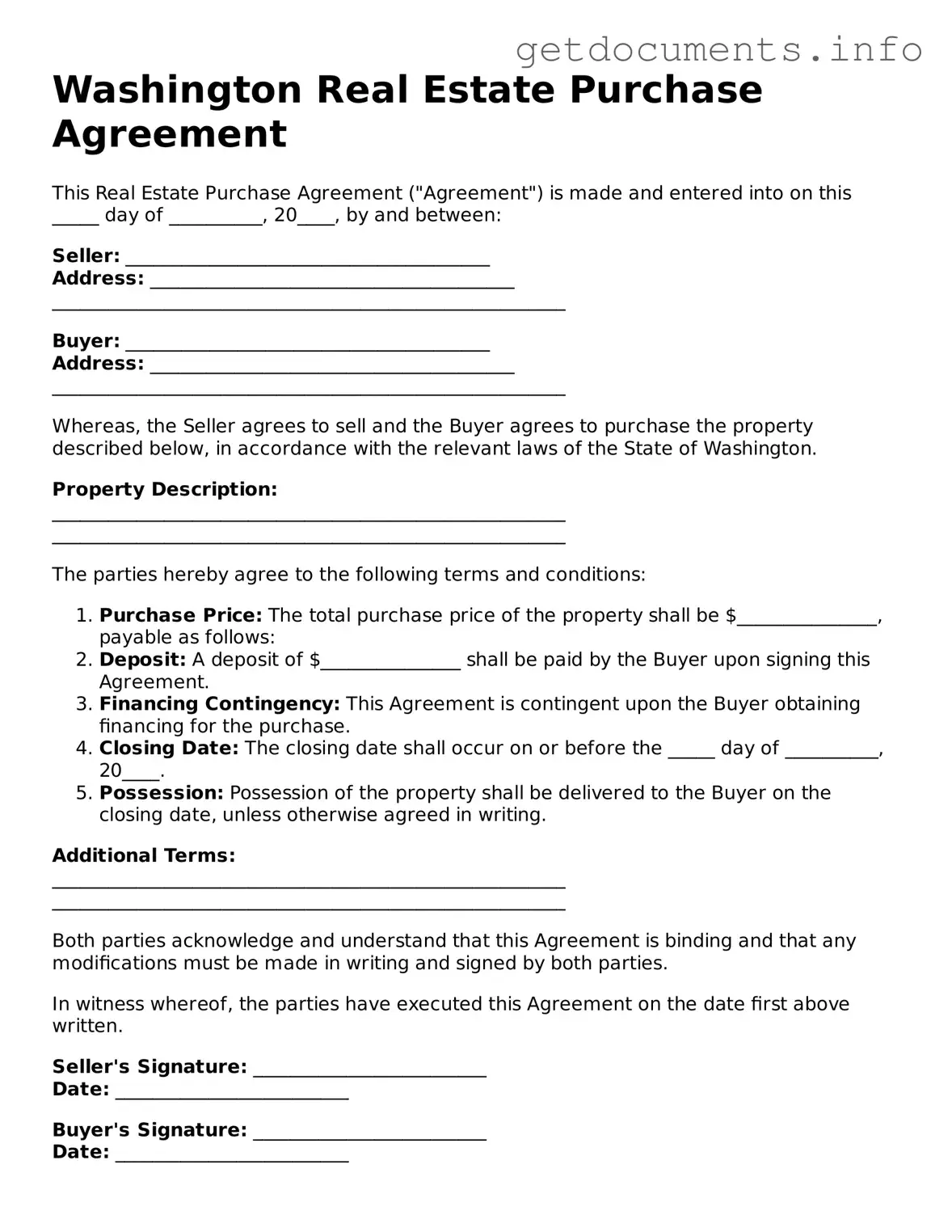The Washington Real Estate Purchase Agreement form serves as a vital tool in the home buying process, providing a structured framework for both buyers and sellers to outline their intentions and expectations. This document typically includes essential details such as the purchase price, financing terms, and the closing date, ensuring that both parties are on the same page. Additionally, it addresses contingencies, which are conditions that must be met for the sale to proceed, such as the buyer securing a mortgage or the home passing an inspection. The form also outlines the responsibilities of each party, including disclosures that the seller must make about the property’s condition. By clearly defining these elements, the agreement helps to minimize misunderstandings and disputes, making the transaction smoother for everyone involved. Furthermore, the inclusion of signatures from both parties signifies mutual consent, solidifying the agreement and moving the process forward. Understanding the nuances of this form is crucial for anyone looking to navigate the real estate market in Washington effectively.
